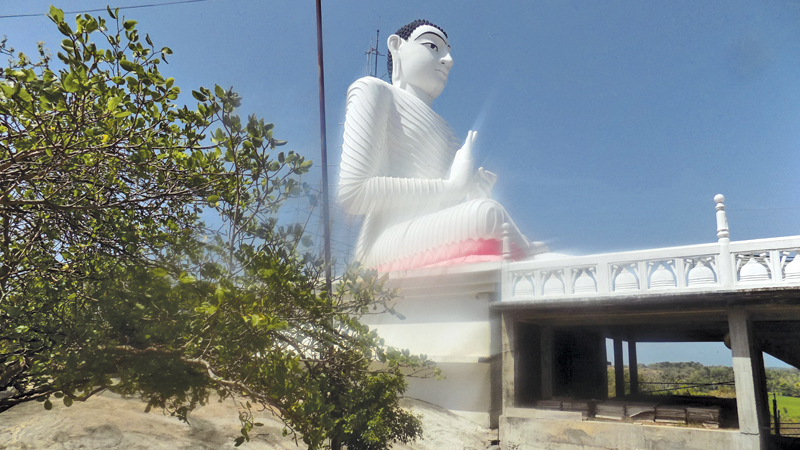Henanigala Raja Maha Vihara, also known as Senanigala Raja Maha Vihara is a historical temple in Dehiaththakandiya in the Ampara District.
It is believed that this temple was one of the sixty-four temples built by King Kawantissa in the 3rd century BCE.
Its strategic position made it an ideal military base for Prince Dutugemunu who assembled his forces here in the final preparation for the onslaught to reclaim the Anuradhapura Kingdom from the South Indian ruler Elara ( 205-161 BCE). This association is thought to have given the site its name – Henanigala or Senanigala (meaning rock of the armed forces “Sena-nigala”)
At one time, the site was abandoned, likely due to population shifts Southward and it eventually faded into obscurity. It was re-discovered only in recent decades during the Mahaweli Development Project that re-populated the Dehiaththakandiya area. Archaeologists uncovered a vast complex long buried beneath the vegetation and time. Today, the temple complex spans 40 acres and is protected as an archaeological reserve. The main shrine area or Udamaluwa is located atop a rocky plateau covering about two acres surrounded by a robust dry stone wall which in places rises 25 to 30 feet high.
The ruins of the plateau include a stupa, a shrine room, a Bodhigara ((Bodhi tree shrine), a preaching hall (Dhamma hall) and a gathering hall (Sanniupathashalawa).
Together these form a Panchawasa complex, a complete monastic unit. A gentle climb up a rocky incline leads to the Udamaluwa (upper terrace). At the entrance stands a five feet tall standing Buddha statue hewn from solid stone possibly a ritual or protective significance.
According to tradition, only 40 Panchawasa temples existed in ancient Sri Lanka. Of these, only two complete examples survive today: Henanigala and Menikdena.
Among the most remarkable features in Henanigala are the pair of towering balustrades (Korawak gal) flanking the entrance to the image house. Decorated with Makara (mythical dragon) motifs, each balustrade rises nearly five feet high making them arguably the tallest of their kind found in Sri Lanka. A moonstone (Sandakadapahana) at the entrance dated to the early Anuradhapura period features only a row of elephants on the outermost ring, a stylistic hallmark of that era.
It remains a key artefact, illustrating the evolution of Sri Lankan stone art. Over 24 Brahmi inscriptions have been discovered across the site and an 85 foot long drip ledge cave likely used as a bhikkhus’ shelter or meditation retreat has recently been identified.
Despite its archaeological value, Henanigala has not been spared from looting and destruction. Treasure hunters have damaged many of the statues, stupas and structures plundering priceless items that once enriched the temple. Conservation efforts are ongoing but much has already been lost. A Samadhi Budda statue was built recently at the site. The temple can be reached on the Mahiyangana – Dehiaththakandiya road and from new Medagama town (near the 28th kilometre post) by turning right and proceeding four kilometres.










